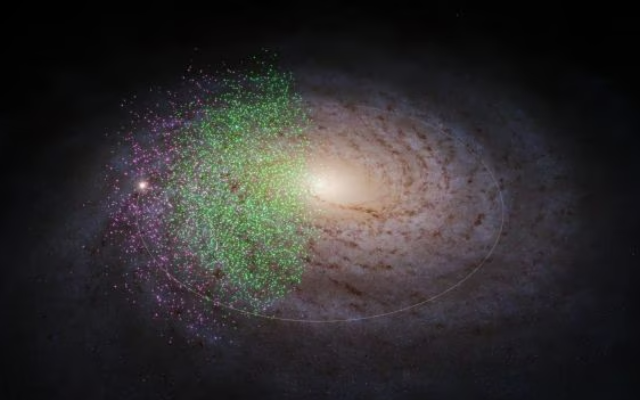
Date : 22-03-2024
On Thursday, the Max Planck Institute for Astronomy revealed that scientists had found “Shiva” and “Shakti,” which may be the earliest known components of the Milky Way. These appear to be the remains of the two galaxies that joined forces with an earlier Milky Way galaxy some 12–13 billion years ago, assisting in the expansion of the latter.
Once data from the SDSS survey and the European Space Agency’s Gaia satellite were combined, the institute’s astronomers named the components Shiva and Shakti. Imagine discovering remnants of a prehistoric settlement that developed into a major metropolis; only on a cosmic scale.
The collisions and mergers of galaxies put several things in motion. Each galaxy will carry its own reservoir of hydrogen gas and when colliding, these clouds are de-stabilised and many new stars will be formed inside. Of course, both the galaxies will have their own sets of stars before they collide and these “accreted stars” will only account for some of the stellar population that forms the newly-combined galaxy. The tricky part is identifying which stars came from which predecessor galaxy when the merger is done.
But basic physics provides the clues. When galaxies collide and their stars mingle, most of the stars retain some basic properties which are linked to the speed and direction of the galaxy they originally came from. Stars that were from the same predecessor galaxies share similar values of energy and what scientists call angular momentum, the momentum associated with their rotation. Both angular momentum and energy are conserved for stars moving in a galaxy’s gravitational field.
For this research, astronomers looked at Gaia data combined with stellar spectra data from the Sloan Digital Sky Survey. SDSS provided detailed information about the stars’ chemical compositions. “We observed that, for a certain range of metal-poor stars, stars were crowded around two specific combinations of energy and angular momentum,” said researcher.
Malhan and Rix combined Gaia data with detailed stellar spectra from the Sloan Digital Sky Survey (DR17) for their current search. The latter offered comprehensive details regarding the chemical makeup of the stars.
We found that stars were concentrated around two distinct combinations of energy and angular momentum for a particular range of metal-poor stars. According to a press release from researcher Khyati Malhan, “Shakti and Shiva might be the first two additions to the ‘poor old heart’ of our Milky Way, initiating its growth towards a large galaxy.” Shiva and Shakti, the names of the two component galaxies, were given by Malhan.
Read More
Palestinian Death Toll from Israeli Attacks on Gaza Nears 32,000: Ministry